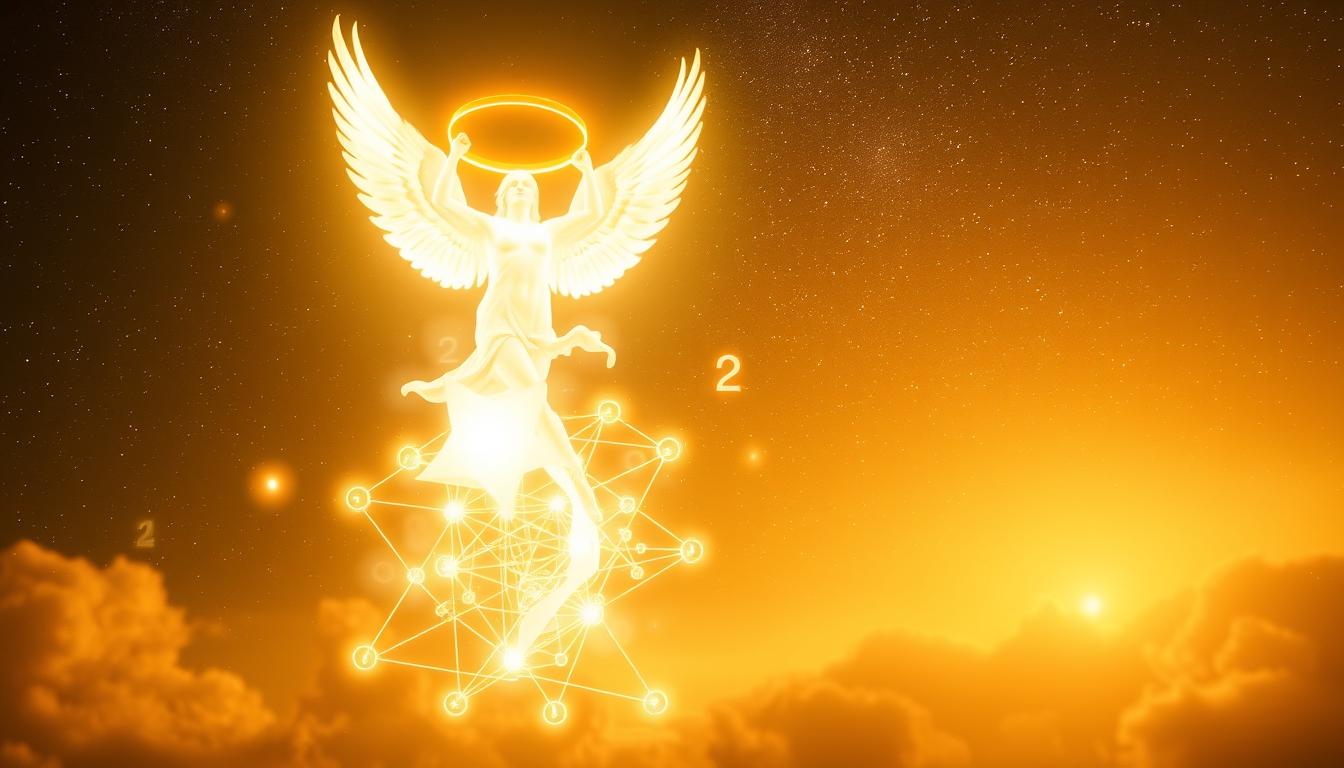Have you ever noticed repeating sequences like 111 or 444 appearing in your daily life? These patterns, often called divine messages, have fascinated people for centuries. The concept traces back to ancient civilizations, with early roots in Sumerian culture around 4000 BC.
Modern spiritualists believe these sequences offer guidance on your life path. They appear in unexpected places – digital clocks, receipts, or license plates. While the practice gained mainstream attention in the 1990s, its foundations blend ancient numerology with contemporary spirituality.
This exploration will reveal how different cultures interpreted repeating digits throughout history. From Pythagoras’ mathematical theories to today’s social media trends, the phenomenon continues evolving while maintaining its mystical appeal.
Key Takeaways
- Repeating digit patterns have been significant since ancient times
- Modern interpretations connect these sequences to spiritual guidance
- The practice blends historical numerology with digital-age observations
- Different cultures assign unique meanings to specific number combinations
- Contemporary interest grew significantly in the late 20th century
Introduction to Angel Numbers
Digital clocks and receipts sometimes reveal hidden meanings. These repeating sequences, like 333 or 1234, are often called angel numbers. They’re believed to be intentional messages from the spiritual realm.

Unlike random digits, these patterns appear with uncanny timing. You might spot them on license plates or during pivotal moments. This phenomenon, known as synchronicity, suggests a deeper connection.
Humans naturally seek patterns—it’s how we make sense of chaos. Spiritualists argue these sequences guide your life path. Some attribute them to guardian angels, while others cite ascended masters.
Doreen Virtue’s book *Angel Numbers* popularized modern interpretations. Authors like Kyle Gray and Joanne Sacred Scribes expanded on these ideas. Their work blends intuition with structured meanings.
Biblical numerology differs slightly. For example, 40 symbolizes testing, not personal guidance. Yet both traditions agree: numbers carry weight beyond math.
Your gut feeling matters most when decoding these signs. The practice’s roots trace back to Pythagoras, but its appeal remains timeless.
The Early Origins of Numerology
Pythagoras once declared that numbers hold the blueprint of reality—a belief echoing through time. Ancient cultures saw digits as more than tools for trade; they were a cosmic language revealing divine order. This section uncovers how early civilizations wove numerical symbolism into their spiritual and daily lives.
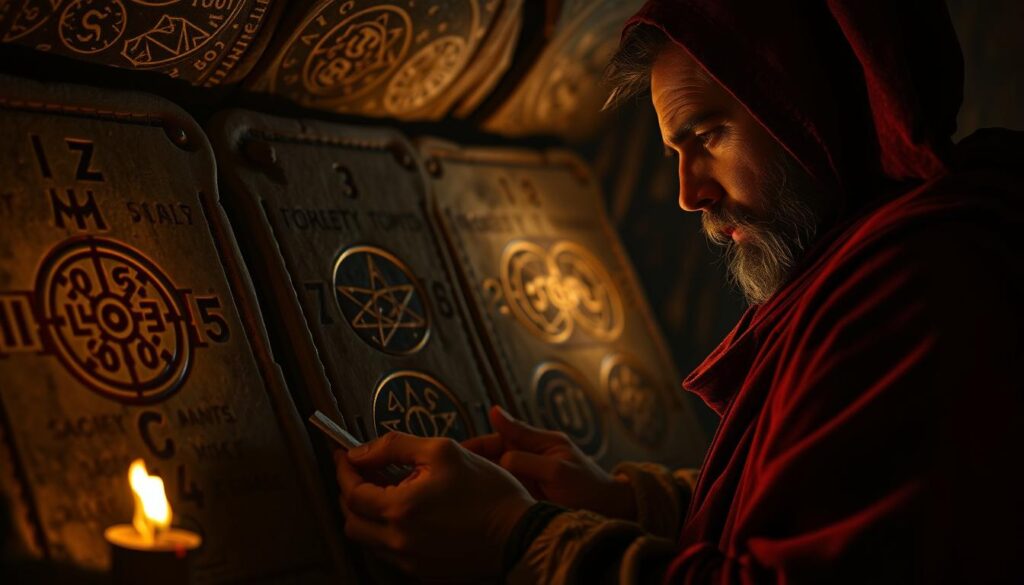
Pythagoras and the Birth of Numerology
Born in the sixth century BC, Pythagoras founded Pythagorean numerology, teaching that “numbers rule the universe.” His system classified odd numbers as masculine (active) and even as feminine (receptive). The sacred tetraktys, a pyramid of ten dots, symbolized harmony in geometry and music.
His ideas influenced Plato and later thinkers, bridging math and mysticism. Unlike Chaldean systems focused on names, Pythagorean methods emphasized birth dates—a practice still used today. For deeper insights into intuitive practices, explore clairvoyance techniques rooted in ancient wisdom.
Ancient Civilizations and Numerical Symbolism
Babylonians crafted the base-60 system, shaping modern timekeeping (60 seconds, 60 minutes). Egyptians developed hieroglyphic numbers by 3000 BC, linking them to gods—Thoth governed measurement, while Osiris’s 42 judges symbolized cosmic balance.
Chinese culture prized 8 for prosperity and avoided 4 (sounding like “death”). Meanwhile, the Fibonacci Sequence appeared in nature’s spirals, hinting at a universal code. These traditions reveal how vibrational energy theories predated modern spirituality by millennia.
Who Invented Angel Numbers? The Key Figures
Three visionaries transformed random sequences into spiritual roadmaps. Their work spans millennia, blending numerology with personal growth. Each brought unique insights that still resonate today.

Pythagoras laid the groundwork in 500 BC. His theories linked mathematics to cosmic harmony. He saw digits as living energies influencing reality.
L. Dow Balliett added new dimensions in the 1800s. Her book The Science of Numbers connected vibrations to colors and musical notes. This practical approach helped people apply numerical meaning to daily choices.
| Figure | Contribution | Key Concept |
|---|---|---|
| Pythagoras | Numerical vibrations | Odd/even energy types |
| L. Dow Balliett | Vibration-color links | Practical applications |
| Doreen Virtue | Modern interpretations | Divine messages |
Doreen Virtue popularized the concept in the 1990s. After a traumatic carjacking, she reported seeing 333 repeatedly. Her books and card decks made these ideas accessible to millions.
Carl Jung’s synchronicity theory often gets mentioned alongside this topic. While not directly related, his work explains why humans notice meaningful patterns.
Celebrities like Kristin Cavallari shared their experiences, boosting mainstream appeal. However, Virtue later rejected her own teachings after converting to Christianity in 2015.
These pioneers show how numerical guidance evolved. From ancient math to modern life path tools, their legacy continues inspiring seekers.
Pythagoras: The Father of Numerology
In ancient Greece, a mathematician saw the cosmos written in numerical patterns. Pythagoras founded his secretive school in Crotona during the sixth century BC, teaching that digits governed reality’s fabric. His followers swore oaths to protect these mystical teachings.

The Pythagorean school discovered surprising connections between numbers and music. They proved vibrating strings created harmonious octaves at simple ratios (1:2, 2:3). This revealed a hidden symphony in the universe‘s design.
Their sacred symbol, the tetraktys, arranged ten dots in a pyramid (1+2+3+4). This represented perfection in geometry and spiritual growth. Odd digits like 3 symbolized masculine energy, while even numbers like 2 embodied feminine balance.
Plato later expanded these ideas in Timaeus, describing geometric shapes as building blocks of matter. Meanwhile, Aristotle dismissed numerology as speculative, favoring empirical observation. After Pythagoras’ death, his movement declined but never vanished.
Modern sacred geometry revives these concepts through the Golden Ratio and Fibonacci sequences. From seashell spirals to galaxy shapes, Pythagorean numerology still echoes in nature’s blueprints. Its legacy proves some truths transcend time.
L. Dow Balliett’s Expansion of Numerology
Numbers gained new dimensions when linked to colors and melodies. In the early 1900s, L. Dow Balliett transformed abstract numerology into practical life tools. Her work resonated with the New Thought movement’s focus on self-improvement through universal laws.
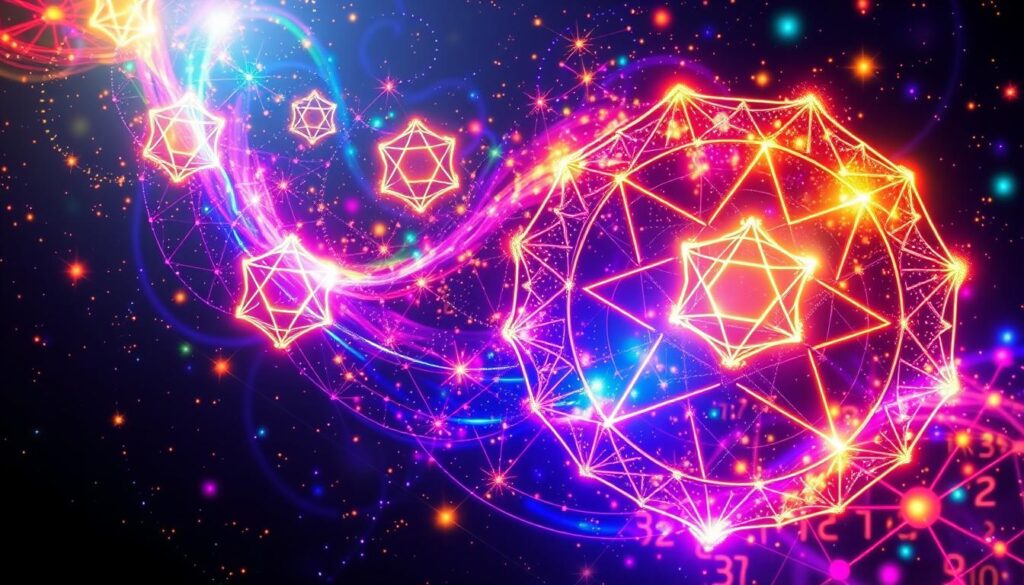
The Science of Numbers
Balliett’s 1908 book The Science of Numbers introduced groundbreaking connections. She mapped digits to chromatic scales—1 vibrated with red, 4 with green—creating a energy spectrum for daily use. Musical notes aligned too (C=1, D=2), allowing harmony-based decision-making.
Unlike Pythagorean theory, her system emphasized action timing. Choosing wedding dates or business launches by numbers became popular. She even designed a “vibration diet” matching foods to personal digits.
Practical Applications for Personal Growth
Balliett empowered women by simplifying calculations. Birth dates revealed core vibrations, while names indicated destiny paths. Her methods contrasted with male-dominated academic numerology of the era.
| Feature | Pythagorean | Balliett System |
|---|---|---|
| Focus | Cosmic harmony | Daily decisions |
| Tools | Geometry | Color/music charts |
| Accessibility | Elite scholars | General public |
By 1920, her work influenced emerging self-help culture. Modern life coaches still use her vibration principles for career and relationship guidance today.
Doreen Virtue and the Modern Angel Number Movement
A spiritual revolution began in an unlikely place—a bathroom meditation session in the 1990s. Doreen Virtue claimed to receive divine messages during this moment, coining the term that would define a generation’s spiritual practice.

From New Age Icon to Controversial Figure
Her 1995 “Angel Therapy” course launched a empire. Hay House published over 50 of her books, while the Angel Numbers 101 deck sold 300,000+ copies. Unlike traditional numerology, Virtue taught that meanings came through instant “downloads” from the divine.
Media appearances on Oprah and The View boosted her profile. Fans worldwide sought the meaning behind their repeating digits. At its peak, her teachings defined new age spirituality for millions.
| Aspect | Pre-Conversion (1990-2015) | Post-Conversion (2017-Present) |
|---|---|---|
| Teaching Style | Channeled angelic messages | Biblical literalism |
| Income Sources | $3M/year from courses | $1K-$2K/month (2024 estimate) |
| Public Stance | “Numbers guide life paths” | “Magical solution to problems” |
A Dramatic Reversal
After converting to Christianity in 2017, Virtue renounced her previous work. The 2024 Daily Mail interview contained shocking quotes:
“It was garbage… people want magical solutions instead of prayer.”
Backlash followed immediately. Former students demanded refunds, while IRS audits complicated her finances. The $1.5M Hawaiian ranch sold quickly, marking a symbolic end to the new age chapter.
Today, Virtue’s legacy remains divisive. While some still use her numbers interpretations, others see her story as cautionary. Either way, she transformed how modern seekers view repeating digits.
Carl Jung’s Synchronicity and Angel Numbers
Carl Jung once described moments where time, space, and meaning collide in surprising ways. His 1952 synchronicity theory explains why some coincidences feel too significant to dismiss as chance. Unlike his mentor Freud—who saw patterns as psychological projections—Jung believed the universe communicates through meaningful alignments.
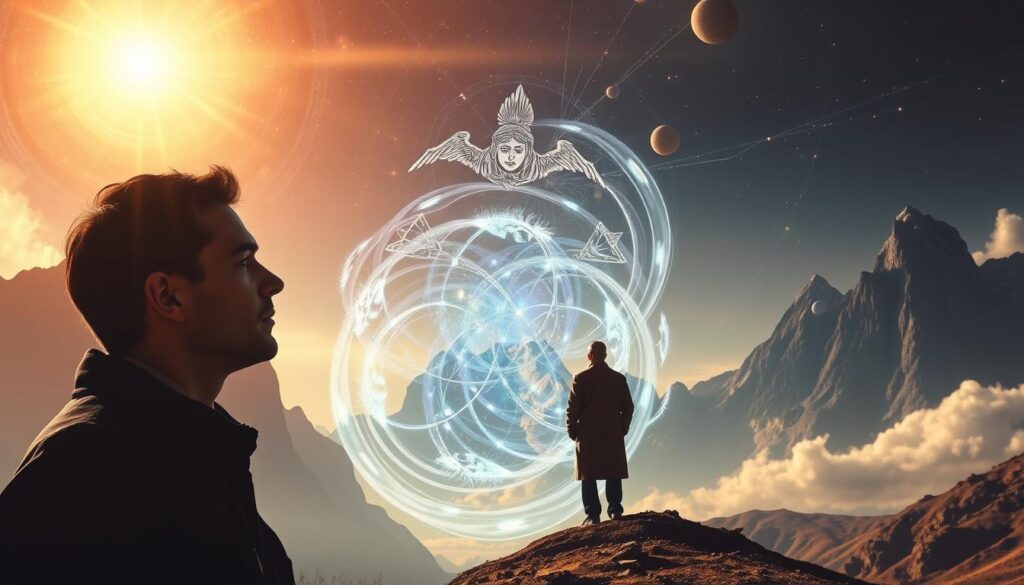
Jung’s “collective unconscious” concept connects here. He proposed that all humans share ancestral memories—like an inherited mental library. When specific numbers appear during life transitions (career shifts, relationships), they might tap into this universal symbolism.
| Perspective | Freud | Jung |
|---|---|---|
| View on Patterns | Random mental projections | Meaningful cosmic signals |
| Example | Dreaming of snakes = fear symbols | Seeing 555 during divorce = transformation sign |
| Therapeutic Use | Analyze personal history | Amplification (explore symbols deeply) |
Marie-Louise von Franz expanded Jung’s work, studying how digits appear in myths worldwide. Her research showed that 3 often represents growth cycles, while 7 signals mystical completion. Modern therapists still use Jung’s amplification technique—discussing recurring symbols to uncover personal insights.
Social media blends these ideas with manifestation trends. TikTok users might post “222 means align your thoughts!”—a simplification of Jung’s complex theories. Yet the core remains: humans crave reason behind life’s mysterious repetitions.
Angel Numbers in Religious and Cultural Contexts
Across continents and centuries, digits have carried sacred weight beyond their mathematical value. Different traditions interpret sequences through unique spiritual lenses, shaping how people navigate the world.
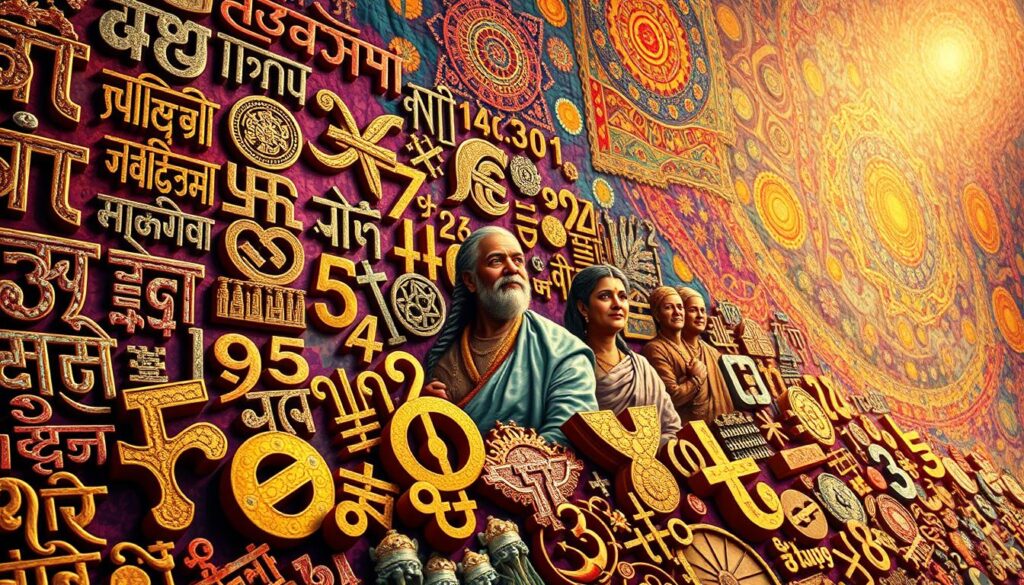
Biblical Numerology vs. Angel Numbers
The Bible assigns fixed meaning to digits—40 symbolizes testing (flood duration), while 7 represents divine perfection. Modern interpretations often diverge sharply. Revelation’s ominous 666 contrasts with contemporary views framing it as self-love encouragement.
Islamic tradition honors 99 names of Allah, each carrying numerical vibrations. Hindu chakras correlate with specific digits too—root (1) to crown (7). These systems focus on collective wisdom rather than personal life guidance.
Cultural Variations in Number Symbolism
China’s fear of 4 (sounding like “death”) clashes with Western angel number stability associations. Japan avoids 9 (“ku” means suffering), while Sikhs celebrate 13 as auspicious—opposite to Western superstitions.
Ancient Mayans built calendars around sacred cycles. Pythagorean perfect 10 mirrors Kabbalah’s 10 sefirot, though their interpretations differ. Italy uniquely dreads 17 (XVII rearranges to “VIXI”—”I lived,” implying death).
African systems like Yoruba numerology remain less documented but equally rich. As Doreen Virtue rediscovered, even rejected beliefs leave lasting marks on how cultures decode the way digits speak.
The Rise of Angel Numbers in the New Age Movement
The 1960s counterculture movement sparked a fresh wave of spiritual exploration. As young people questioned traditional institutions, alternative practices gained traction across America. The 1967 Harmonic Convergence event marked a turning point, with thousands gathering to align with cosmic energy patterns.

Shirley MacLaine became the movement’s unlikely ambassador. Her 1983 memoir Out on a Limb detailed encounters with spiritual guides and numerical synchronicities. This mainstream exposure helped normalize metaphysical concepts that seemed fringe just years earlier.
Parallel to astrology’s resurgence, numerology found new audiences. James Redfield’s 1994 novel The Celestine Prophecy wove numerical themes into its plot about spiritual awakening. Bookstores began stocking dedicated sections for these interpretive systems.
| Era | Development | Impact |
|---|---|---|
| 1960s-70s | Counterculture adoption | Mainstream visibility |
| 1990s | Bookstore expansion | Commercial viability |
| 2020s | Social media virality | Global participation |
Today’s digital landscape accelerated this growth exponentially. TikTok’s #angelnumbers tag boasts 3.4 billion views, while Instagram accounts like @angelnumbers1111 attract 1.2M followers. Algorithms favor these bite-sized spiritual posts, creating endless scrollable content.
Crystal shops now sell engraved number stones alongside traditional gems. Spotify features numerology playlists with millions of streams. Even popular apps like Co-Star integrate numerical guidance into daily horoscopes. As one influencer noted:
“The digital age didn’t invent spiritual seeking—it just gave us new tools to share these ancient practices.”
Traditional religious groups often criticize these trends as superficial. Yet from Tokyo to Toronto, people around world continue finding personal meaning in repeating digits. Whether passing fad or lasting phenomenon, the movement shows how old wisdom adapts to new times.
Modern Interpretations and Authors
Numerology has found fresh voices in the age of viral content and algorithm-driven discoveries. Where ancient scholars studied scrolls, today’s seekers scroll through feeds—finding meaning in timestamps and follower counts alike. This digital transformation has birthed hybrid practices blending tradition with internet culture.

Light Warriors and Digital Oracles
Kyle Gray’s “Light Warrior” approach resonates with millennials by framing sequences as cosmic text messages. His bestselling books reinterpret classic numerology for stressed urbanites, suggesting 555 signals career changes rather than spiritual tests. Unlike Virtue’s angel-focused system, Gray emphasizes personal empowerment through numerical awareness.
Johanna Aúgusta exemplifies social media’s impact. Her TikTok tutorials decoding license plate patterns gained 2.3M followers in 18 months. “The algorithm knows when you need to see certain numbers,” she claims in a viral clip. Such content thrives on platforms favoring bite-sized mystical content.
When Algorithms Interpret Destiny
Numerology.com now offers AI-generated readings analyzing your “day” vibration based on birth dates and current transits. Meanwhile, meme culture simplifies interpretations—444 becomes “angels are lit” in viral image macros. This accessibility comes with tradeoffs:
| Platform | Content Style | Engagement Rate |
|---|---|---|
| TikTok | 15-sec interpretations | 12.7% avg. |
| Aesthetic number grids | 8.2% avg. | |
| Reddit r/numerology | Community analysis | 22K active users |
WhatsApp sticker packs now deliver daily numerical guidance, while Twitter bots auto-reply to tweets containing sequences like 1111. Pinterest reports 340% growth in numerology vision boards over three years. As one YouTube creator noted:
“We’re not inventing new meanings—we’re translating ancient wisdom into the language of notifications.”
Critics argue this trend reduces spirituality to shareable content. Yet the numbers don’t lie—digital numerology is rewriting how generations engage with cosmic messages.
Angel Numbers in the Digital Age
Modern seekers decode destiny through glowing screens as much as ancient texts. Apps like Numerologist.com deliver instant readings for $4.99-$29.99/month, analyzing birth dates and current transits in real time. These tools make esoteric knowledge accessible during coffee breaks.

API integrations now power niche services. A numerology dating app matches profiles by life path numbers, while meditation apps sync sessions with personal vibrations. Zoom workshops surged post-2020, with certified practitioners hosting live decodings.
Blockchain entered this space unexpectedly. NFT collections feature animated sequences like 777, marketed as digital talismans. Google’s autocomplete reveals trending queries—”1111 meaning” ranks higher than celebrity birthdays in some regions.
| Platform | Innovation | User Base |
|---|---|---|
| Apple Watch | Vibration alerts for sequences | 1.2M downloads |
| Codecademy | Numerology coding tutorials | 8K students |
| ChatGPT | AI interpretations | Daily queries |
Privacy concerns emerge as apps request birth charts and location data. One Reddit thread warns:
“Free readings often harvest data for targeted ads.”
The metaverse may redefine these practices next. Early prototypes let users collect 3D number tokens or attend virtual retreats. As screens dominate our day, spiritual guidance adapts to the digital moment.
Skepticism and Criticism of Angel Numbers
Scientific scrutiny reveals psychological mechanisms behind numerical coincidences. Pattern apophenia—the tendency to find meaningful connections in random data—explains why people notice repeating digits. Scientific American notes this bias evolved to help humans survive, not decode cosmic messages.
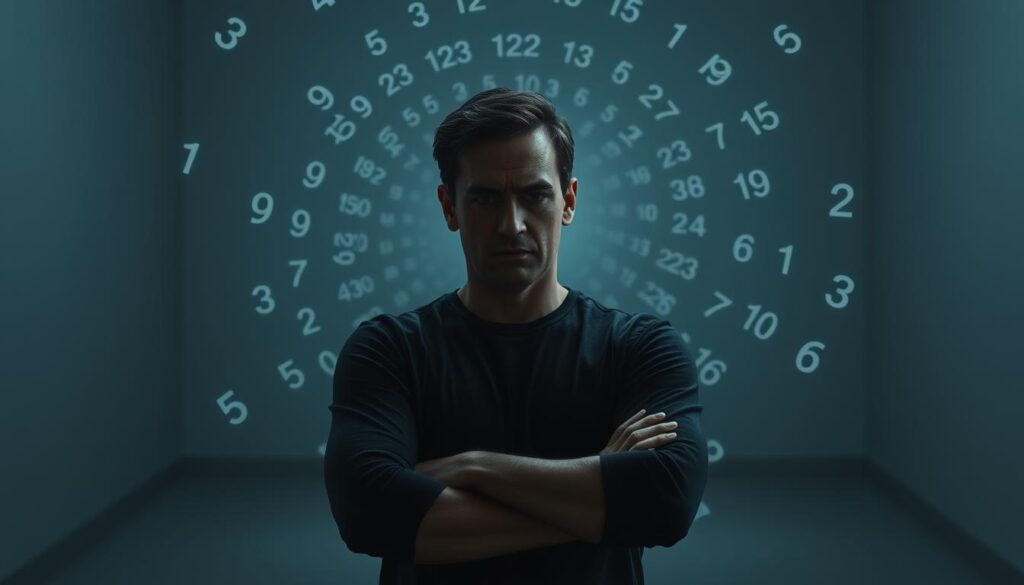
The Barnum effect amplifies this phenomenon. Vague interpretations like “new beginnings” apply to most people at some point. A 2023 University of Melbourne study showed 78% of participants accepted generic number meanings as personally accurate.
Potential dangers emerge when beliefs override logic:
- Financial recklessness (quitting jobs after seeing 777)
- Medical neglect (refusing treatment due to “favorable” digits)
- Cult recruitment (using sequences to establish control)
Richard Dawkins critiques such superstitions in The God Delusion:
“Pattern-seeking becomes pathological when it replaces evidence-based thinking.”
Doreen Virtue herself later warned:
“There’s no magical solution to problems—just hard work and rational choices.”
Reddit’s r/skeptic community highlights inconsistencies. Why does 111 mean “manifestation” today but signaled danger in medieval years? How can algorithms deliver personalized guidance while serving millions?
A balanced way forward acknowledges:
- Noticing patterns is natural
- Critical thinking prevents harm
- Psychological benefits don’t require literal belief
Ultimately, whether seen as spiritual signs or cognitive quirks, these numbers reveal more about human psychology than cosmic truths.
Conclusion: The Timeless Appeal of Angel Numbers
From clay tablets to smartphone screens, numerical patterns persist. For 2600 years, cultures have found meaning in sequences—from Pythagoras’ harmonics to today’s TikTok trends. This enduring practice blends mysticism with our innate need to decode the universe.
Psychologists note how these patterns provide comfort during uncertainty. Generations pass down interpretations like heirlooms—a mother explaining 111 to her daughter. Now, VR sessions may soon replace crystal ball readings.
Modern seekers balance intuition with logic. Tiny Rituals suggests clear quartz for amplifying numerical guidance. Yet true power lies in personal discernment—not blind belief.
Your life path unfolds through choices, not just digits. Let sequences inspire, not dictate. The cosmos speaks many languages; you choose how to listen.

